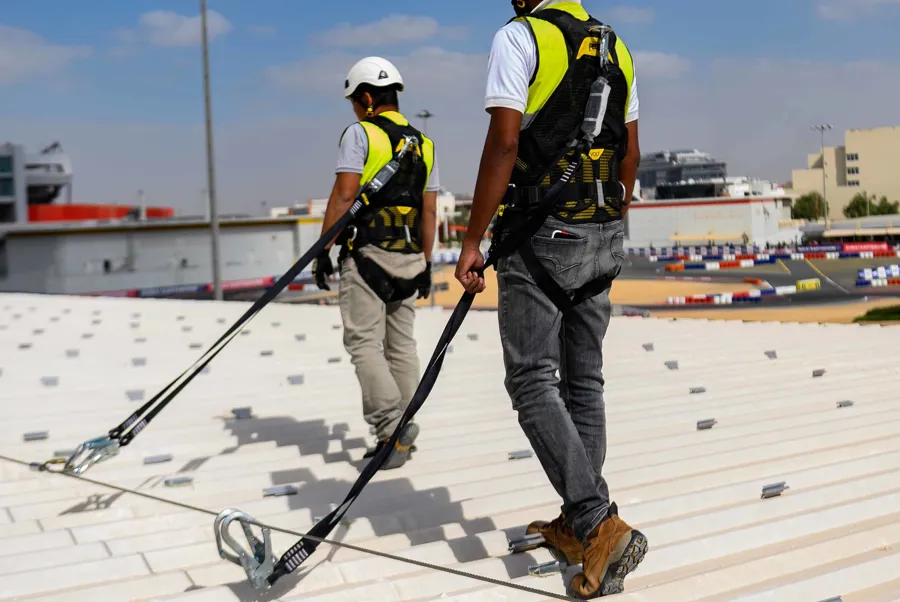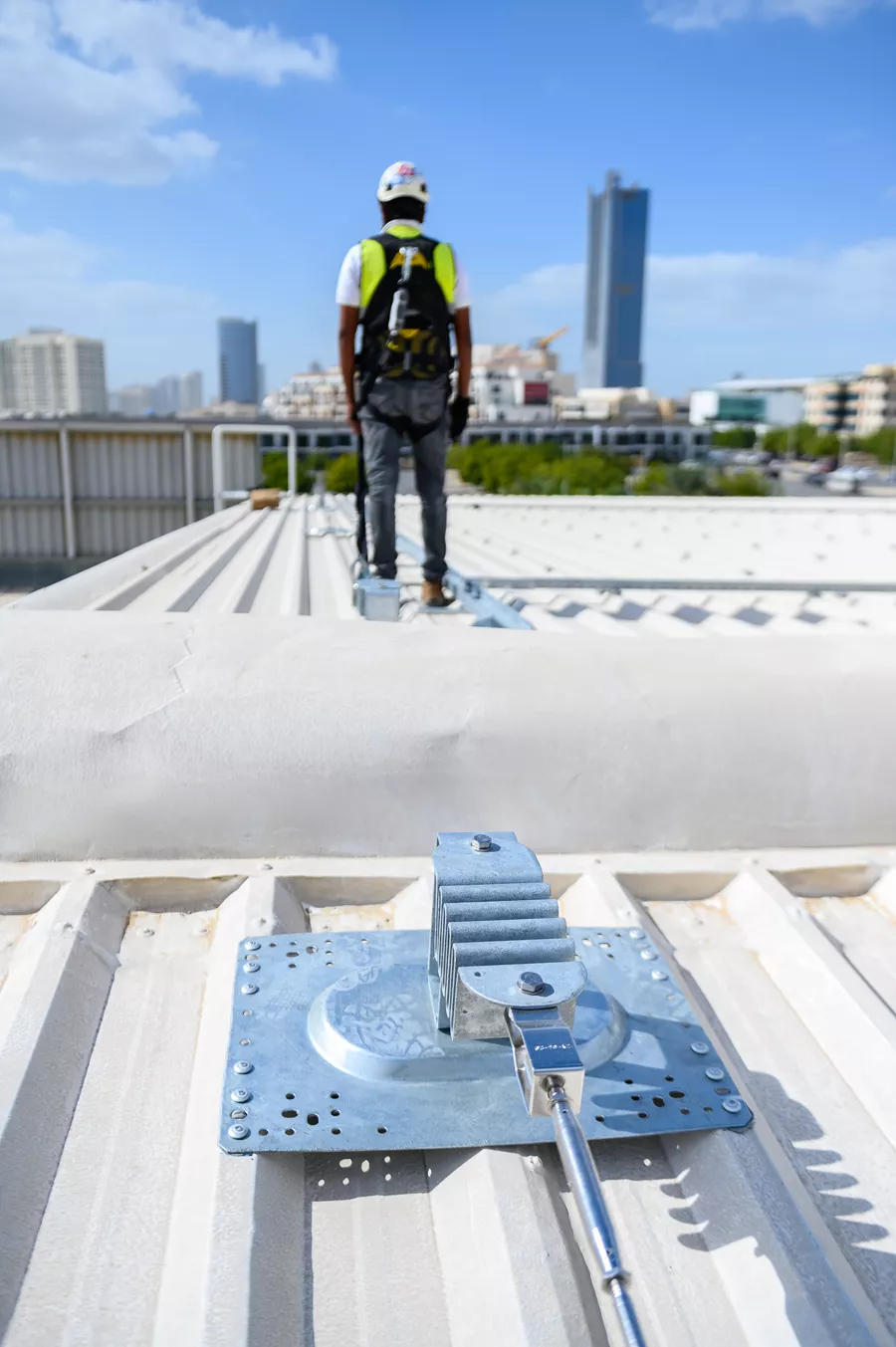
Horizontal Lifelines (HLLs) are crucial for ensuring safety in various work environments, especially where workers are at risk of falling from heights. This guide explores the essentials of Horizontal Lifelines, covering their benefits, compliance standards, and much more, aiming to enhance workplace safety and efficiency.

A horizontal lifeline is a cable or rail system secured to the building's surface, providing a continuous line of fall protection for individuals, connected by a lanyard or other appropriate means of attachment. These systems are designed to provide rooftop employee safety through continuous fall protection, allowing them to move more expansively and efficiently to perform jobs on the rooftop.

Some factors when selecting the appropriate system requires evaluating factors such as the work environment, the type of work being performed, and the system's capacity.
1. Work Environment: The specific conditions and physical layout of the work environment play a significant role in determining the most suitable type of HLL system. Consider whether the work will be indoors or outdoors, as environmental factors like wind, rain, and temperature extremes can affect the performance and durability of the system. Additionally, the presence of electrical hazards, corrosive materials, or other unique environmental factors may necessitate specialized materials or configurations.
2. Type of Work Being Performed: The nature of the tasks workers will be performing while attached to the HLL system can influence the selection process. For example, tasks that require a great deal of mobility may benefit from a system with longer spans between anchor points and minimal sag, while work in confined or complex spaces might require a more flexible system setup.
3. System Length and Configuration: The length of the area to be covered by the HLL and the desired configuration (straight, curved, or encompassing multiple planes) must be considered. This will not only impact the choice of system but also the placement and strength of anchor points.
4. Number of Users: HLL systems are designed to accommodate a specific number of users simultaneously. It’s essential to choose a system that can safely support the number of workers who will be using it at the same time, considering the combined weight of the users and their equipment.
5. Fall Clearance: Calculate the fall clearance required, taking into account the potential sag of the lifeline, the length of the lanyard, the height of the worker, and any additional safety factors. Ensuring adequate fall clearance is vital to prevent a falling worker from striking the ground or any lower obstacles.
6. Compatibility with Personal Protective Equipment (PPE): The HLL system must be compatible with the personal fall arrest systems (PFAS) and other PPE used by workers. Compatibility ensures that all components of the fall protection system work seamlessly together to provide maximum safety.

One size does not fit all, especially in the realm of workplace safety systems. We understand that the efficiency of a Horizontal Lifeline system depends on its seamless integration into the existing infrastructure. With this in mind, we engineered Kee Line, a system that can be adapted and configured to fit a myriad of roof types.


Here at Kee Safety, our commitment lies in delivering dependable and top-quality safety solutions to address all your fall protection needs. It's crucial to consult a fall protection expert to customize a solution that caters to your unique facility, workforce, and operational methods. Trust a proficient professional to navigate you through the choices, guaranteeing compliance with OSHA standards and maximal safety.
Get in touch with us today to arrange a consultation with a local Kee Safety fall protection specialist.

Please fill in your details below and we’ll be in touch shortly.